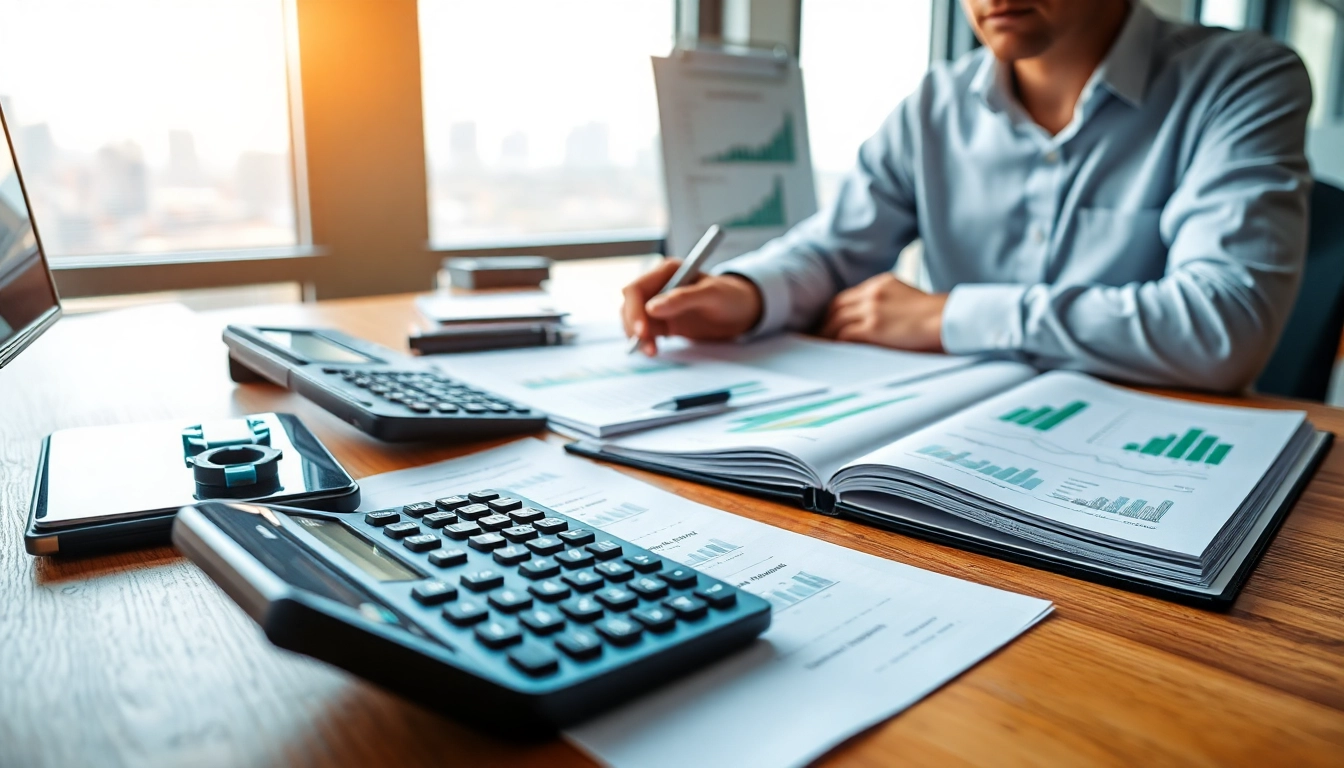
Understanding Trade Futures
The world of finance is filled with various instruments and strategies that enable investors and traders to maximize their profits while managing risks effectively. One area that has gained significant popularity in recent years is trade futures. In this comprehensive guide, we will explore futures trading in depth, covering everything from the fundamental concepts to advanced trading strategies, as well as common challenges and solutions to enhance your trading skills.
What Are Futures Contracts?
Futures contracts are standardized agreements to buy or sell a specific asset, commodity, or financial instrument at a predetermined price at a specified date in the future. They are primarily used in the trading of commodities like oil, gold, and agricultural products, but they also apply to financial instruments, including stocks and indices. Futures contracts can be seen as hedging tools designed to protect against price fluctuations or as speculative instruments aiming to profit from price changes.
Each futures contract specifies the quantity of the asset, the delivery month, and the quality specifications for physical goods. The significance of futures lies not only in their ability to hedge against uncertainties but also in providing liquidity to the markets where they operate. They serve both hedgers—those seeking to mitigate risk—and speculators—those looking to profit from price movements.
Types of Futures and Their Uses
Futures contracts can be categorized into four main types based on the underlying asset:
- Commodity Futures: These are agreements to buy or sell physical commodities such as oil, natural gas, metals, or agricultural products. For example, a farmer might sell futures contracts to lock in a price for their harvest before the delivery date.
- Financial Futures: These involve financial instruments like currencies, interest rates, and stock indices. Investors often use these contracts to hedge against fluctuations in financial markets.
- Index Futures: These are futures contracts on stock market indices, allowing traders to speculate on the future value of indices like the S&P 500. They are valuable for investors looking to diversify their portfolios.
- Currency Futures: These contracts allow for speculation or hedging against fluctuations in currency exchange rates. They are widely used by multinational companies engaged in international trade.
Key Players in the Futures Market
The futures market incorporates a diverse range of participants, each playing a significant role:
- Hedgers: These are individuals or institutions that seek to protect themselves against potential losses by using futures to lock in prices.
- Speculators: These traders assume high risks in the hopes of making significant profits. They do not intend to take physical delivery of the underlying asset.
- Market Makers: These professionals facilitate liquidity in the market by offering buy and sell orders, ensuring that transactions can occur smoothly.
- Regulators: Institutions like the Commodity Futures Trading Commission (CFTC) oversee the futures market to ensure fair trading practices and to prevent fraud.
Getting Started with Trade Futures
Setting Up Your Trading Account
To begin trading futures, you must first set up a trading account with a broker that offers futures trading. The selection of a broker should be based on several criteria, including:
- Commissions and Fees: Compare different brokers’ commission structures and ensure they align with your trading goals.
- Margin Requirements: Since futures trading often involves leverage, understanding the margin requirements is crucial. Brokers typically offer different margin rates based on the asset class.
- Trading Platform: Evaluate the trading platforms offered by different brokers to ensure they provide the necessary tools and features for effective analysis and execution.
- Regulatory Compliance: Make sure the broker is regulated by appropriate authorities to safeguard your investments.
Once you select a broker, you can fund your account and begin trading. Most brokers require an initial deposit that varies based on the broker and futures contracts you intend to trade.
Financial Instruments to Trade Futures
In the futures market, a wide range of financial instruments is available for trading. Here are a few examples:
- Commodity Futures: As mentioned earlier, contracts for assets like corn, wheat, gold, or crude oil.
- Index Futures: Trading on S&P 500, Nasdaq, or Dow Jones Index futures contracts.
- currency futures or Forex: Contracts on currency pairs such as EUR/USD, GBP/USD, etc.
- Cryptocurrency Futures: Contracts on cryptocurrencies like Bitcoin and Ethereum, which have gained traction recently.
Legal Considerations and Regulations
The futures market is heavily regulated to protect investors and maintain market integrity. In the United States, the Commodity Futures Trading Commission (CFTC) serves as the primary regulator. Essential legal considerations include:
- Understanding Leverage: Leverage allows traders to control large positions with a smaller amount of capital, but it also increases risk. It’s essential to be aware of the leverage used and the potential implications.
- Contract Specifications: Each futures contract comes with specific terms and conditions, including expiration dates, contract sizes, and more. Traders must fully understand these specifications before entering any trades.
- Reporting Requirements: Traders may be required to report their holdings and transactions to relevant authorities, ensuring transparency within the market.
Strategies for Trading Futures
Fundamental Analysis in Futures Trading
Fundamental analysis involves evaluating economic indicators, financial statements, and news events that can affect asset prices. For futures trading, consider the following factors:
- Supply and Demand: Understanding the balance of supply and demand for an asset can provide insights into potential price movements.
- Economic Indicators: Pay attention to reports like GDP, unemployment rates, and inflation reports, as they can significantly impact futures prices.
- Weather Patterns: In agricultural commodities, weather reports can directly influence prices, making this a crucial factor in your analysis.
Technical Analysis Techniques for Trading Futures
Technical analysis focuses on historical price movements to identify trading opportunities. Key techniques include:
- Chart Patterns: Recognizing patterns such as head and shoulders, triangles, or flags can indicate potential future movements.
- Indicators: Utilizing indicators like moving averages, Relative Strength Index (RSI), and Bollinger Bands can help gauge market conditions.
- Volume Analysis: Analyzing trading volume can provide insights into the strength of a price move—high volume often indicates strong price movements.
Risk Management Strategies
Effective risk management is crucial for longevity in futures trading. Consider implementing the following strategies:
- Diversification: Avoid putting all your capital into a single trade or asset. Spread your investments across different instruments.
- Setting Stop-Loss Orders: By placing stop-loss orders, you can automatically exit trades if they move against you, limiting potential losses.
- Position Sizing: Define the size of each trade based on the percentage of your portfolio you are willing to risk.
Common Challenges in Trade Futures
Dealing with Market Volatility
Markets can be highly volatile, which presents both opportunities and risks. To effectively manage volatility:
- Stay Informed: Keep abreast of news and events that can impact market conditions.
- Use Options for Hedging: Options can provide insurance against extreme market movements and help protect your futures positions.
Psychological Factors Affecting Traders
Trading psychology plays a crucial role in decision-making. Factors such as fear and greed can lead to poor choices. To combat these:
- Maintain a Trading Journal: Documenting trades and decisions can help identify emotional patterns that lead to mistakes.
- Practice Mindfulness: Techniques such as meditation can enhance focus and improve decision-making under pressure.
Overcoming Fear and Greed in Futures
Fear of missing out (FOMO) and greed often lead traders to chase losses or over-leverage positions. To counteract these emotions:
- Stick to Your Trading Plan: Having a comprehensive trading plan reduces emotional decision-making.
- Adopt a Long-Term Perspective: Focus on overall performance rather than individual trades to mitigate emotional reactions.
Enhancing Your Trade Futures Skills
Continuous Learning and Education Resources
The futures market is constantly evolving, and staying informed is essential. Consider the following resources:
- Online Courses: Platforms like Coursera and Udemy offer courses on futures trading.
- Books: Consider reading books by renowned traders and analysts to gain various perspectives.
- Webinars and Workshops: Participate in these events to learn from industry experts and get insights on current market trends.
Utilizing Trading Platforms Effectively
Leveraging advanced trading platforms can enhance your trading experience. Key features to look for include:
- Real-Time Data: Access to real-time quotes and market news is crucial for executing timely trades.
- Customizable Charts: Ability to customize indicators and charts to suit your trading style can greatly aid in analysis.
- Backtesting Tools: Testing your strategies on historical data can provide valuable insights before applying them to live trading.
Analyzing Your Performance Metrics
Regularly reviewing performance metrics is vital for improvement. Key metrics to analyze include:
- Win Rate: The percentage of profitable trades versus total trades can indicate your effectiveness.
- Risk/Reward Ratio: A higher ratio indicates better potential profitability for the risks you’re taking.
- Maximum Drawdown: This measures the most significant loss from a peak to a trough, which helps assess risk tolerance.







